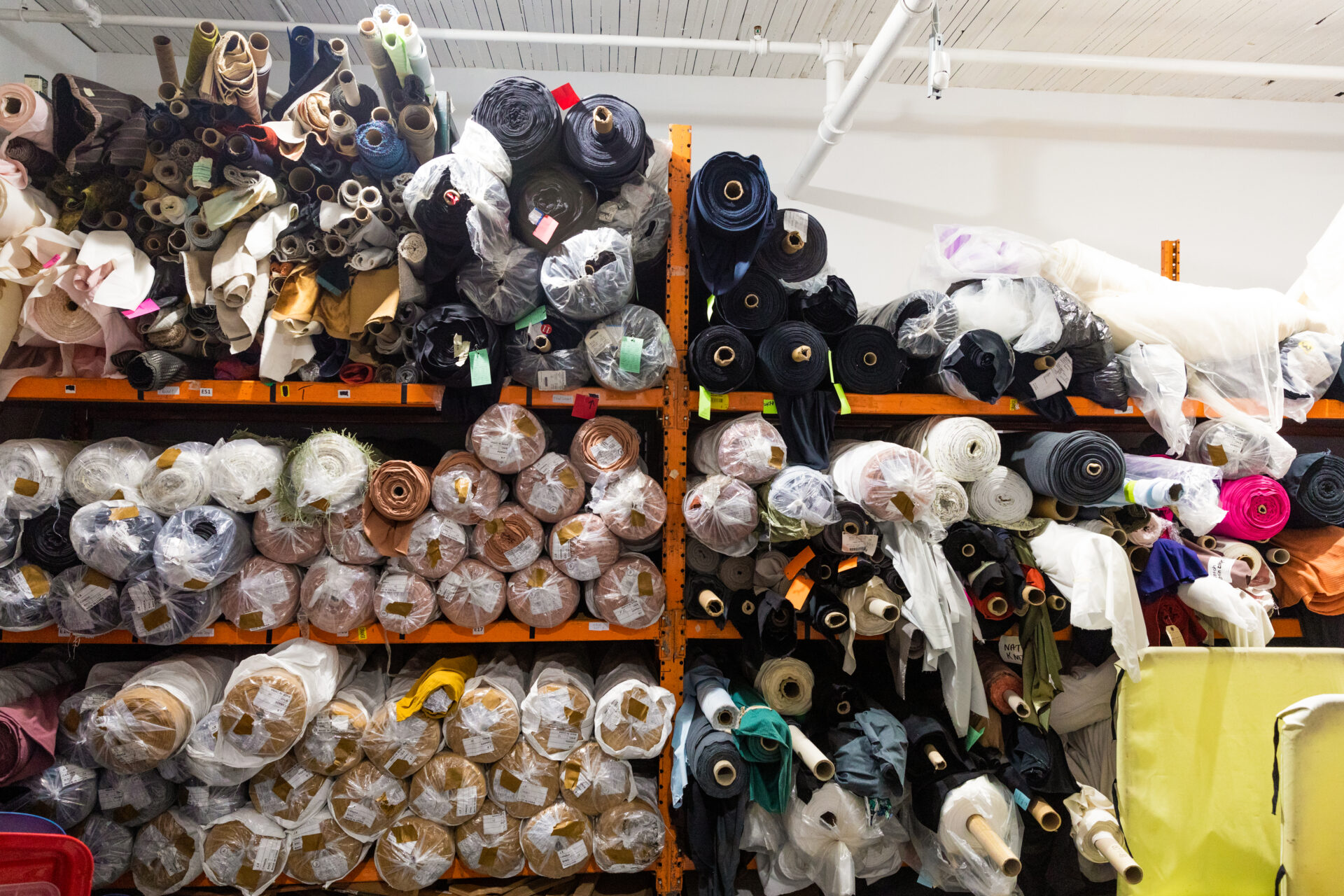The Cost of our Clothing
We all buy, wear, and discard clothing, but at what cost? It turns out, the cost of our clothing is much higher than the $5.00 fast-fashion t-shirt we pick up in the sale section. The fashion industry is the second largest industrial polluter, producing 1.2 billion tonnes of CO2 emissions per year, amounting to 10 per cent of global emissions.
We tend to think about our electricity usage or blame oil and gas companies for environmental degradation, but our clothing choices also have a big impact on the planet.
After chatting with industry professionals and researching online, I came to the alarming conclusion that the fashion industry’s footprint was much larger than I’d first thought.
The latest research shows that the fashion industry is a significant contributor to environmental degradation. According to a 2020 study by the Global Fashion Agenda, the fashion industry generates 2.1 billion tonnes of CO2 annually, or four per cent of global greenhouse gas emissions. That figure may surprise you, but the fashion industry produces 150 billion items of clothing every year, according to Fashion Revolution. All these garments require raw materials, labour, and transportation. For example, WWF researchers found that it requires 2,700 litres of water to grow the cotton to produce an average T-shirt. That’s equivalent to 2.5 years worth of drinking water for a single person, which is absurd to me when 40 per cent of the world’s population does not have access to clean drinking water.
On top of the resources required to make garments, there are also challenges at the end of a garment’s lifespan. Currently, the clothing industry follows a linear economy model: we take, make, consume, and discard. According to Global Fashion Agenda, 73 per cent of the world’s garments end up in landfills. Every second, a garbage truck’s worth of clothing is being thrown out. What’s scarier, fewer than 15 per cent of garments are recycled and less than one per cent of clothing can be regenerated to make new pieces.
You might think that donating clothing would be an obvious solution, but at the rates that we produce, buy, and discard garments, donation centres are overflowing with unwanted clothing that gets shipped to the Global South. According to Fashion Revolution, Sudanese residents are more likely to purchase and wear donated clothing because it is cheaper and more accessible than custom-made or slow fashion local brands. This is immensely detrimental to their local textile manufacturing industry. It is wildly unfair for the price of our overconsumption to be paid by people living in the Global South. Fortunately, there are companies and non-profits, such as Our Social Fabric, Fabcycle, and Queen of Raw, working to reuse and recycle textile waste, so that it isn’t sent to landfills or overseas.

Educating consumers and conscious founders
I felt incredibly guilty and depressed about my clothing choices after I learned the dirty truths behind the fashion industry. I wallowed, thinking about the bleak state of the industry for a couple of months, then decided that I needed to do my part and take action.
To support the slow fashion movement, in 2018 I founded Recloseted, an organization that an organization that offers solutions to the fast fashion industry. I had no idea what Recloseted was going to look like, but I began compiling all the research I had collected and self-published an ebook, The Recloseted Handbook: Your Sustainable Fashion Guide. I was excited that readers were educated and empowered to change the clothing industry, but it still didn’t feel impactful enough.
I realized that, while it’s important to have educated and empowered consumers, we also need businesses to offer conscious and eco-friendly options. If we truly want to improve, big companies and governments also need to clean up their act. Therefore, I decided to leverage my business background to help launch and grow sustainable fashion brands.
Today, Recloseted offers two online programs, the Conscious Label Launcher and Conscious Apparel Accelerator, to help launch and scale sustainable fashion brands. Our team also offers sustainability consulting services to help existing brands become more conscious.
Our work changes with the needs of the brands we work with. For brands just starting out, our Conscious Label Launcher (CLL) program helps them source sustainable materials and find ethical production partners. For example, a recent CLL client started a conscious athletic wear brand. We helped her identify sustainability priorities, which helped guide her choices on materials, packaging, and shipping options.
Production can be a big headache for first-time slow fashion founders. To make finding materials and suppliers easier, we created a trusted database of mills and manufacturers that produce high-quality materials and pay their garment workers a fair wage. We also help vet any mills and manufacturers that our clients come across.
For brands looking to measure their progress, we help them develop a spreadsheet system to track the environmental impact of the choices they make and compare their numbers with industry averages. For example, if a client uses hemp in their clothing instead of cotton, we help them measure the water savings. Or, if a client chooses to offset their carbon emissions by planting trees, we help them track the impact. Once we identify all of the activities they are doing, we set it up in the spreadsheet. For every sale a client makes, their brand’s overall positive impact increases and the spreadsheet tracks it like clockwork. For smaller brands that don’t have the resources to hire an in-house sustainability expert, this system can be a great alternative. We aim to set our clients up and then empower them to effortlessly measure their efforts in an approachable manner.
To date, the Recloseted team has worked with more than 150 brands worldwide and I’m incredibly honoured to support clients who make a serious difference in the industry. However, this is only the beginning and I will not rest until the fashion industry is transformed.
Diverting textile waste
Our Social Fabric (OSF) is a Vancouver-based non-profit that started in 2009 to divert fabric waste from film productions. Initially, OSF collected donated fabric, cut it into various lengths, and sold it to sewists and crafters at affordable prices.
Joanna Wyatt, chair of the OSF board says the “non-profit accepts donations from manufacturers, designers, private individuals, and the film industry.” OSF also accepts home decorating and quilting fabrics, knitting and embroidery materials, notions, patterns, books, and even machines.
Joanna explains that the non-profit’s vision is to eradicate textile waste from Canadian landfills. “In moving towards this vision, we look to nourish and support Canada’s fibre arts community and slow fashion movement.”

In 2020, OSF built a web store and now ships deadstock fabrics and supplies across Canada. “We’re most proud when we see what our customers make with our fabrics,” Joanna says. “Seeing fabrics, which might have been considered ‘waste’, turned into garments or other works of fabric art is the reason we exist.” She also proudly exclaims that last year, the organization “kept 29 tonnes of fabric and sewing-related materials out of the garbage dump.”
Joanna invites Vancourites to attend one of their legendary in-person shopping events or to shop their new online store.
It’s not all doom and gloom
It’s easy to feel hopeless, but things are changing. Sustainable businesses and conscious consumers are slowly transforming the fashion industry from a linear economy to a circular one. Slow fashion brands are prioritizing zero-waste designs, using more eco-friendly materials, paying garment workers fair wages, and diverting waste from landfills whenever possible.
Groups like Fashion Revolution and the Sustainable Apparel Coalition measure the impact of the world’s largest clothing brands and publish findings in reports and indexes. Other groups, like the Global Fashion Agenda, are urging clothing company CEOs to commit to more sustainable practices.
Change is happening. By buying fewer clothes, choosing quality over quantity, and supporting sustainable brands, we can show businesses what we want and where the opportunity lies. Together, let’s right the harmful fashion industry!

HOW YOU CAN CREATE IMPACT:

SHOP at secondhand stores. Instead of buying clothes from fast-fashion stores, find hidden treasures in thrift stores. Browse from anywhere with online options such as ThredUp or Thrifted. You’ll score one-of-a-kind pieces and save money.

WATCH The 2017 documentary RiverBlue to learn about fast fashion’s “hydrocide,” or the contamination of clean water for commercial gain.

ASK brands #WhoMadeMyClothes to support transparency in the fashion industry and fair treatment for garment workers. The campaign also includes a form letter generator to email brands about sustainable fashion practices.
Purchase Issue 03
After a year of chaos and uncertainty, our mission for ISSUE 03 of RIPPLE OF CHANGE is to spark inspiration in our readers. There was a lot of talk of coming together, acting in solidarity for our peers, and putting others before ourselves to overcome the challenges put before us. Now, we put that to the test.
Order your copy of Issue 03 today!










